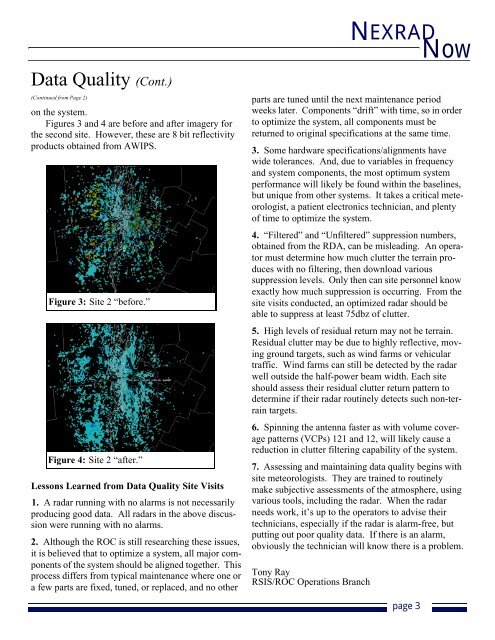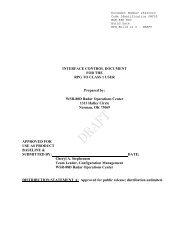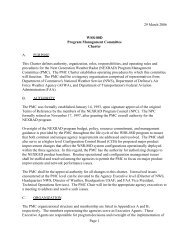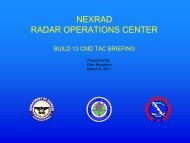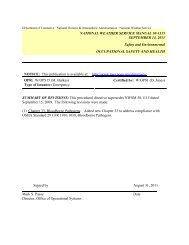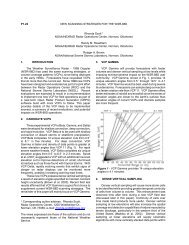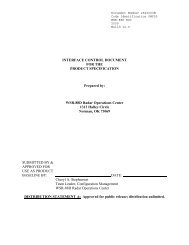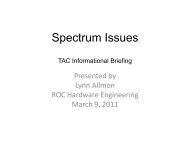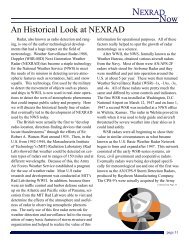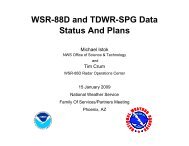Issue 13 - NEXRAD Radar Operations Center - NOAA
Issue 13 - NEXRAD Radar Operations Center - NOAA
Issue 13 - NEXRAD Radar Operations Center - NOAA
You also want an ePaper? Increase the reach of your titles
YUMPU automatically turns print PDFs into web optimized ePapers that Google loves.
<strong>NEXRAD</strong>NowData Quality (Cont.)(Continued from Page 2)on the system.Figures 3 and 4 are before and after imagery forthe second site. However, these are 8 bit reflectivityproducts obtained from AWIPS.Figure 3: Site 2 “before.”Figure 4: Site 2 “after.”Lessons Learned from Data Quality Site Visits1. A radar running with no alarms is not necessarilyproducing good data. All radars in the above discussionwere running with no alarms.2. Although the ROC is still researching these issues,it is believed that to optimize a system, all major componentsof the system should be aligned together. Thisprocess differs from typical maintenance where one ora few parts are fixed, tuned, or replaced, and no otherparts are tuned until the next maintenance periodweeks later. Components “drift” with time, so in orderto optimize the system, all components must bereturned to original specifications at the same time.3. Some hardware specifications/alignments havewide tolerances. And, due to variables in frequencyand system components, the most optimum systemperformance will likely be found within the baselines,but unique from other systems. It takes a critical meteorologist,a patient electronics technician, and plentyof time to optimize the system.4. “Filtered” and “Unfiltered” suppression numbers,obtained from the RDA, can be misleading. An operatormust determine how much clutter the terrain produceswith no filtering, then download varioussuppression levels. Only then can site personnel knowexactly how much suppression is occurring. From thesite visits conducted, an optimized radar should beable to suppress at least 75dbz of clutter.5. High levels of residual return may not be terrain.Residual clutter may be due to highly reflective, movingground targets, such as wind farms or vehiculartraffic. Wind farms can still be detected by the radarwell outside the half-power beam width. Each siteshould assess their residual clutter return pattern todetermine if their radar routinely detects such non-terraintargets.6. Spinning the antenna faster as with volume coveragepatterns (VCPs) 121 and 12, will likely cause areduction in clutter filtering capability of the system.7. Assessing and maintaining data quality begins withsite meteorologists. They are trained to routinelymake subjective assessments of the atmosphere, usingvarious tools, including the radar. When the radarneeds work, it’s up to the operators to advise theirtechnicians, especially if the radar is alarm-free, butputting out poor quality data. If there is an alarm,obviously the technician will know there is a problem.Tony RayRSIS/ROC <strong>Operations</strong> Branchpage 3


